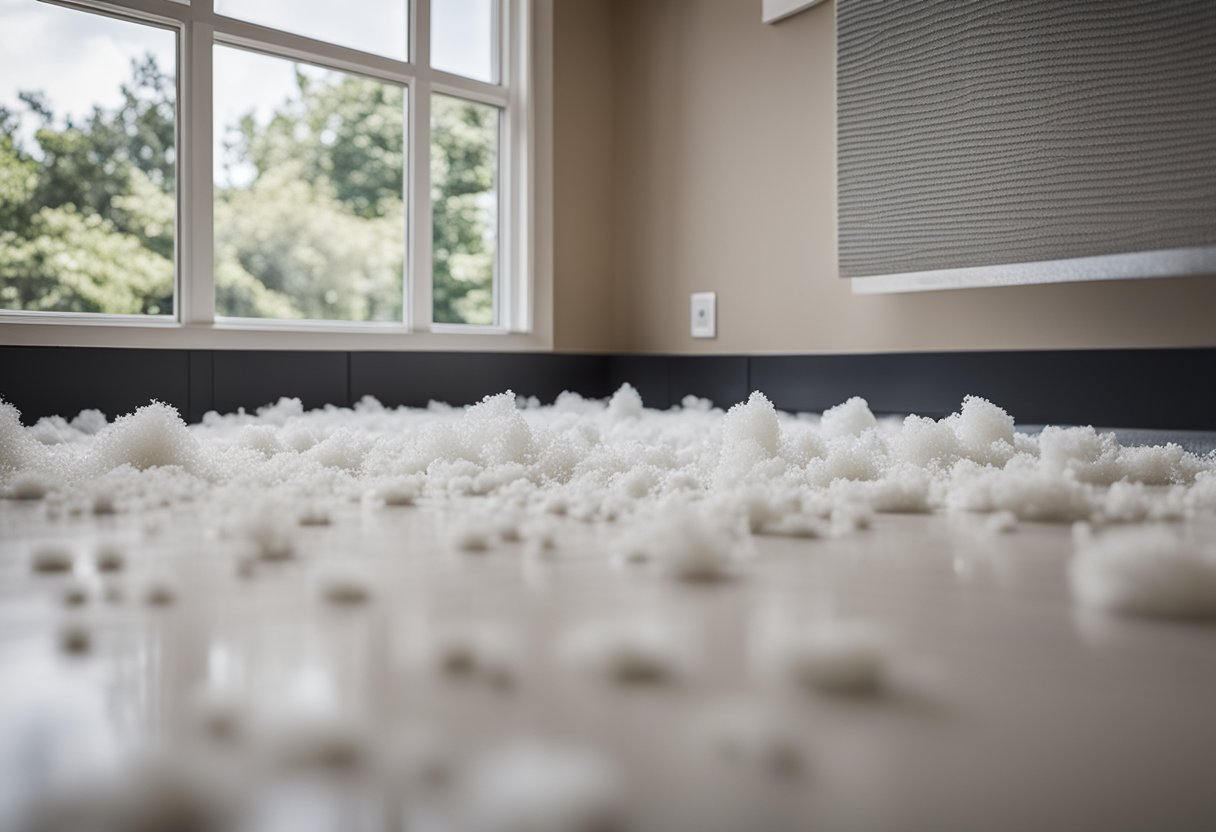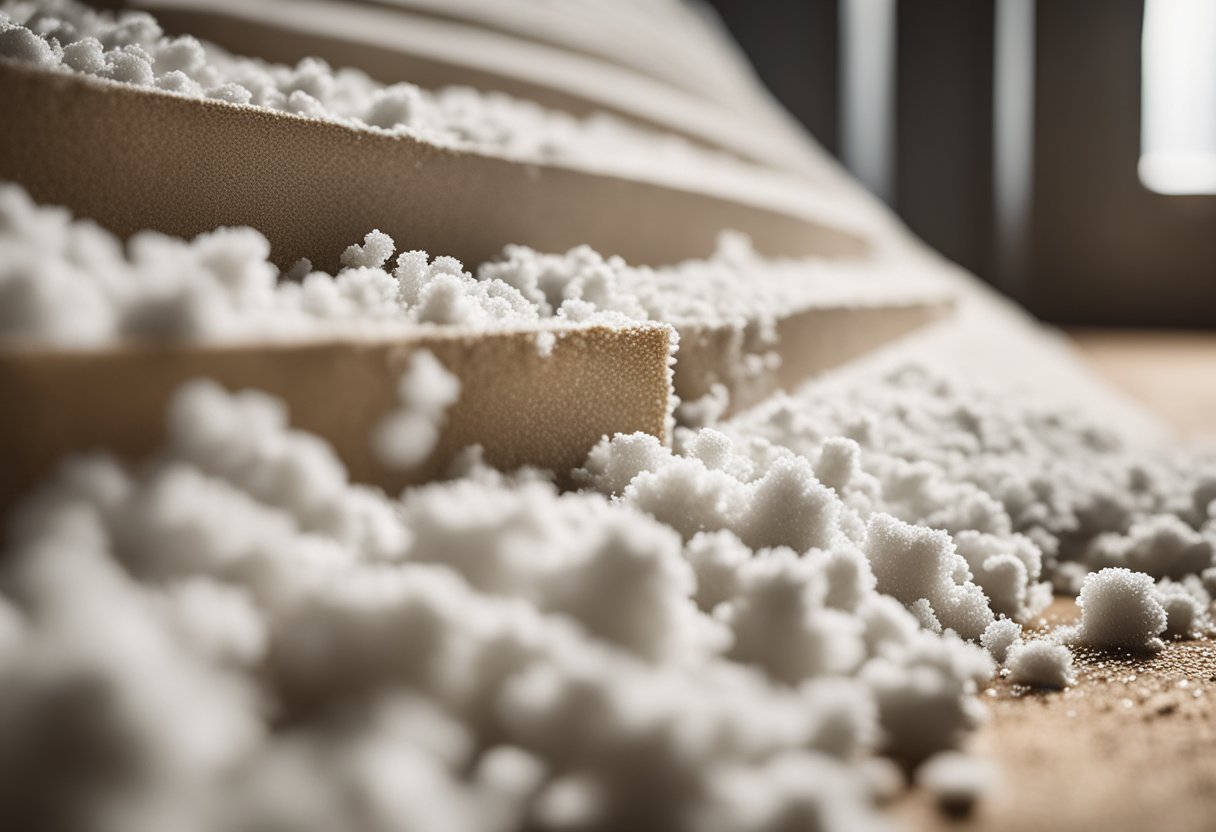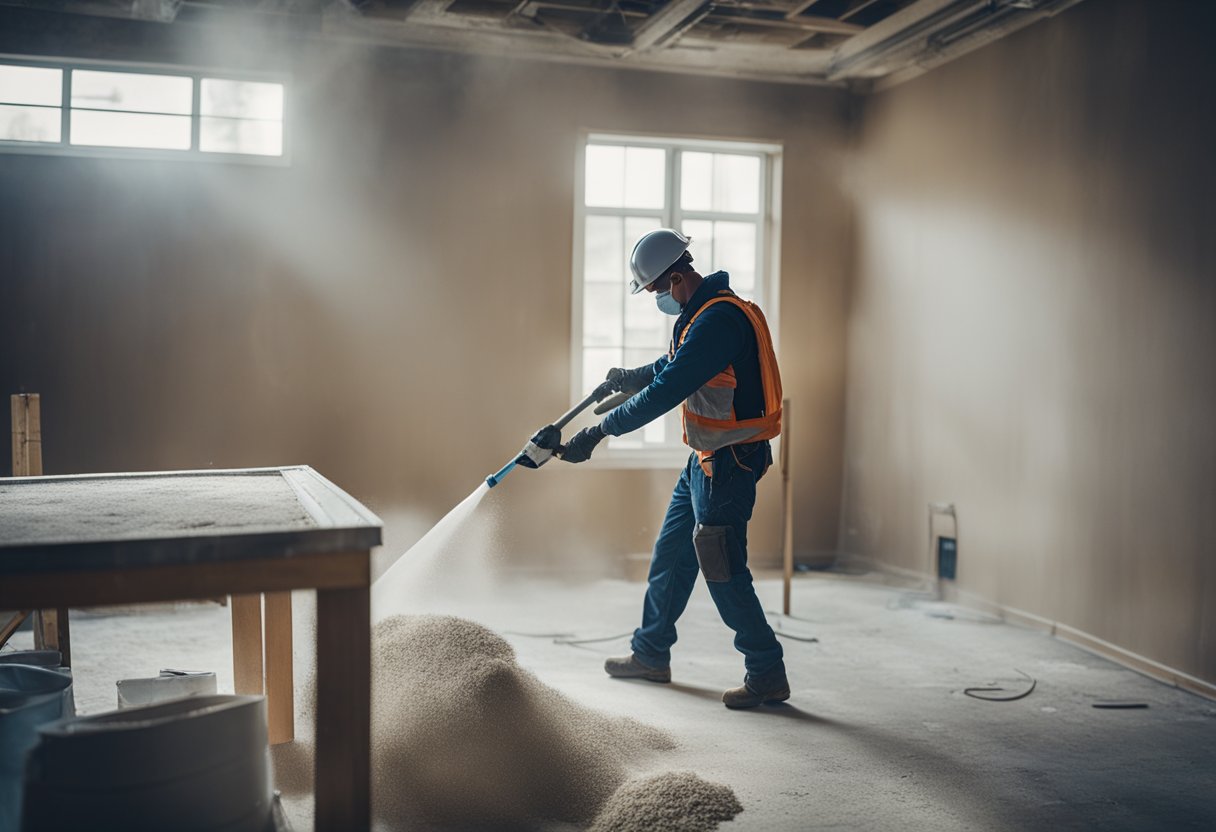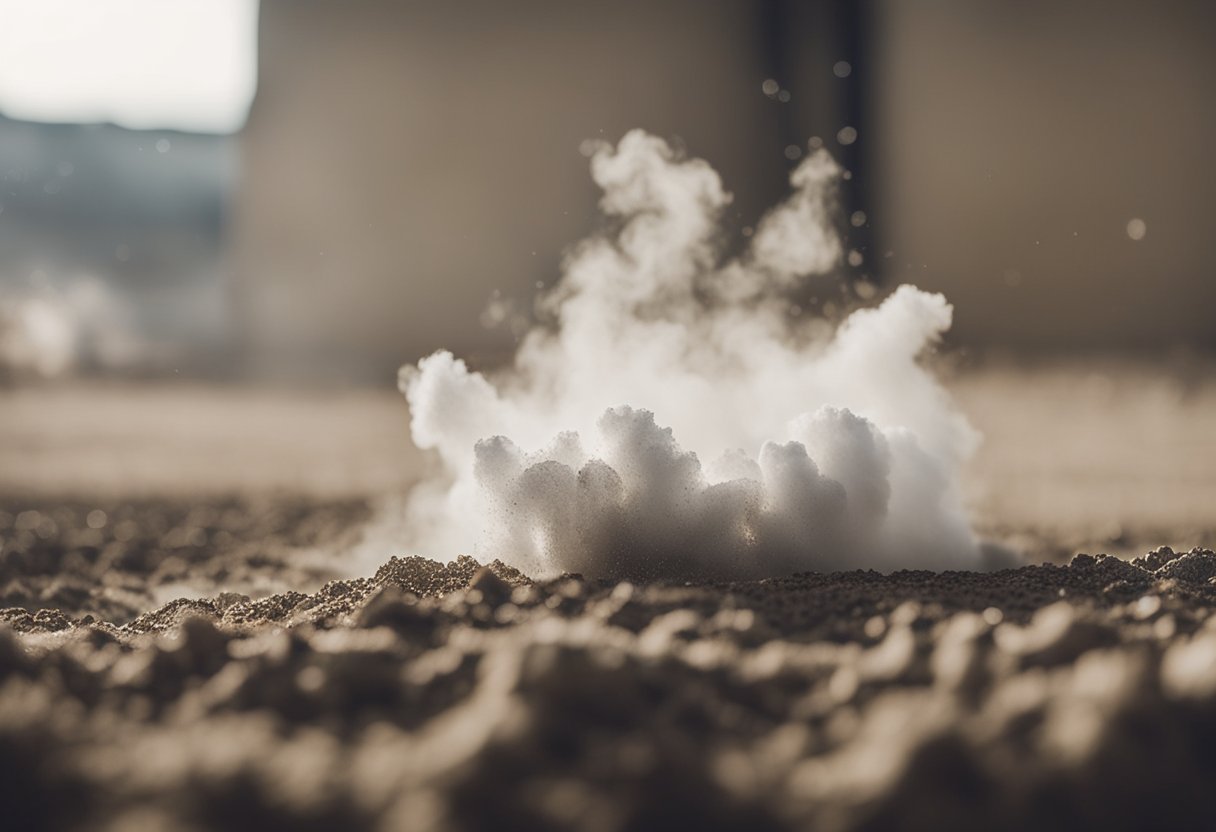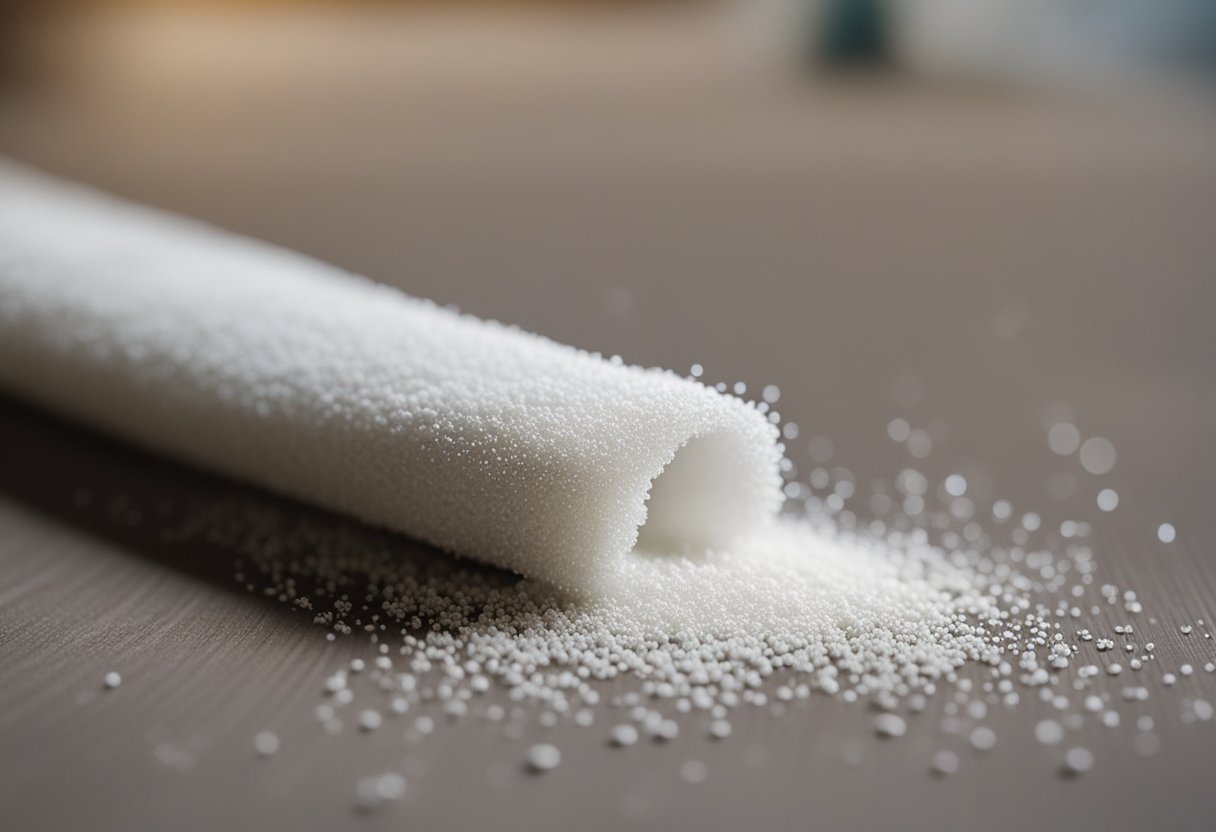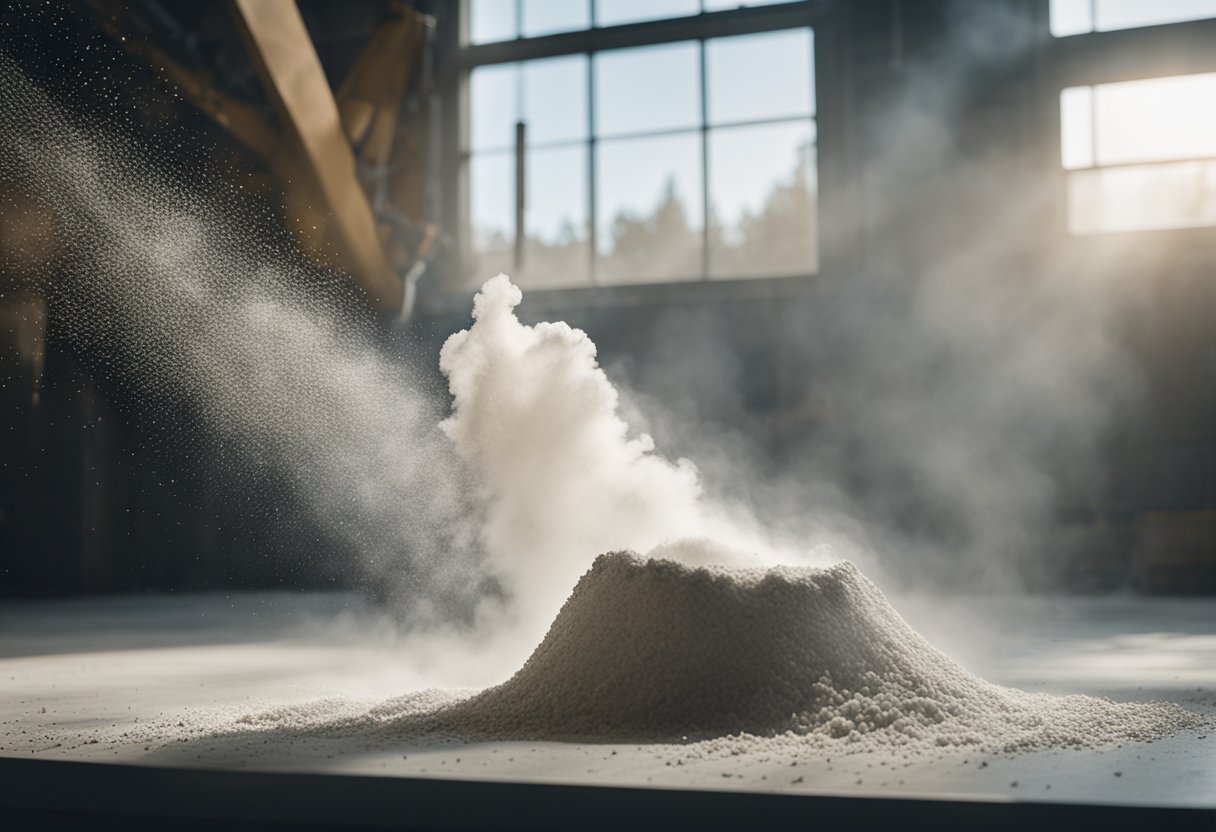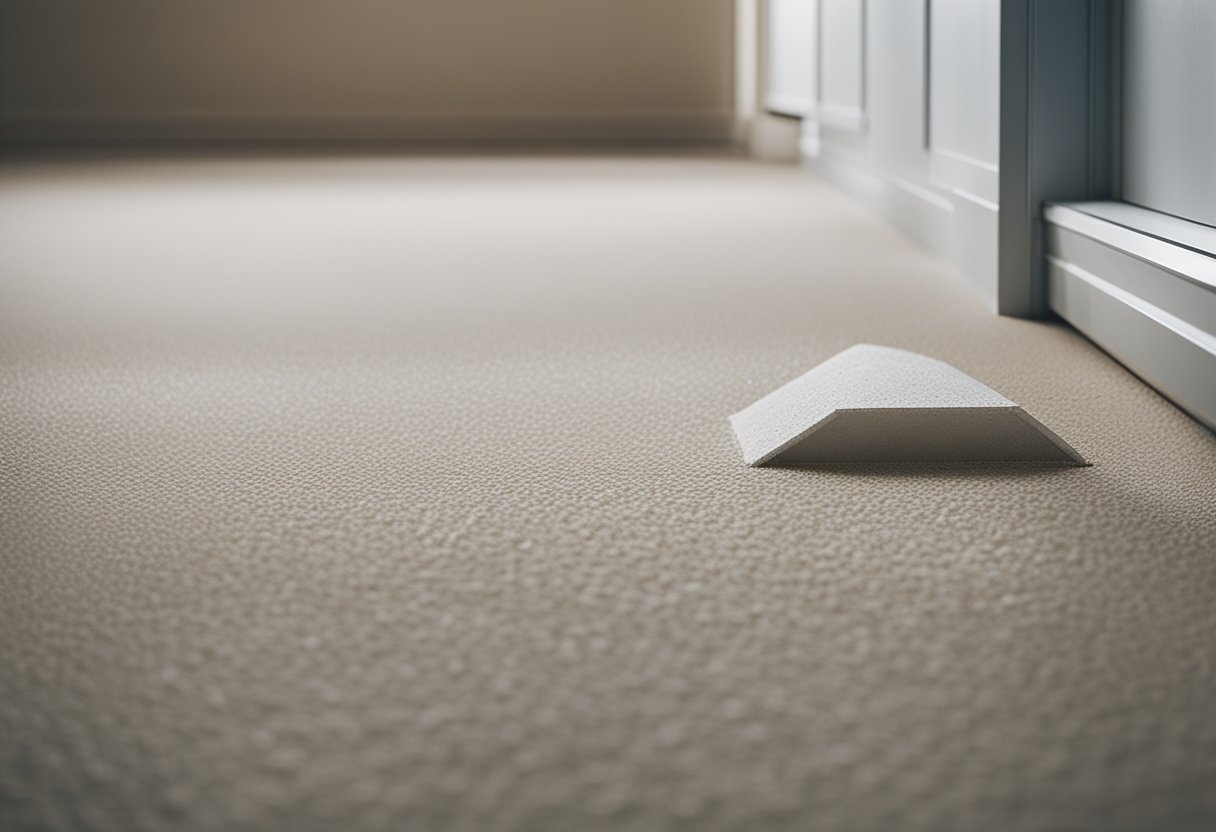Drywall is a widely used construction material that is popular for its affordability and ease of installation. However, when cutting or sanding drywall, it produces dust that can pose a health risk to workers and potentially ignite if exposed to high temperatures. This raises the question: is drywall dust flammable?
Drywall dust is not flammable, but the paper facing on drywall can ignite when exposed to temperatures above 450 degrees Fahrenheit. The composition of drywall typically consists of gypsum plaster sandwiched between two layers of paper, which is why the paper facing is the only flammable component of drywall. Despite this, it is still important to take precautions when working with drywall dust to prevent health risks and potential fire hazards.
Key Takeaways
- Drywall dust is not flammable, but the paper facing on drywall can ignite when exposed to high temperatures.
- Precautions should be taken when working with drywall dust to prevent health risks and potential fire hazards.
- Proper disposal of drywall dust is important to prevent environmental contamination.
Composition of Drywall
Drywall is a common construction material used to create interior walls and ceilings. It is made up of several components, including gypsum, paper, and various additives. Understanding the composition of drywall is important in determining whether or not it is flammable.
Gypsum and Additives
The primary component of drywall is gypsum, a mineral that is found in sedimentary rock formations. Gypsum is a soft mineral that is composed of calcium sulfate dihydrate. This mineral is not flammable, and it is commonly used in construction because of its fire-resistant properties.
In addition to gypsum, drywall also contains various additives, including mica, clay, and resin. These additives are used to improve the strength and durability of the material, as well as to reduce its flammability. For example, mica is a mineral that is added to drywall to increase its resistance to fire and moisture. Clay is used to improve the workability of the material, while resin is added to improve its adhesion to the paper covering.
Paper Covering
The paper covering on drywall is another important component of the material. This covering is made up of two layers of paper that are laminated to the gypsum core. The paper is typically made from recycled materials, and it is treated with various chemicals to improve its strength and resistance to fire.
While the gypsum core of drywall is not flammable, the paper covering can ignite when exposed to high temperatures. This is why it is important to take precautions when working with drywall, such as using fire-resistant materials and properly installing and maintaining the material.
Overall, the composition of drywall is an important factor in determining its flammability. While the gypsum core is not flammable, the paper covering can ignite when exposed to high temperatures. By understanding the composition of drywall and taking the proper precautions, it is possible to reduce the risk of fire when working with this common construction material.
Types of Drywall
https://www.youtube.com/watch?v=La9Gr4vvvgA&embed=true
As I researched the topic, I found that there are different types of drywall available on the market. In this section, I will discuss the different types of drywall and their properties.
Regular and Fire-Resistant Drywall
Regular drywall is made of gypsum and has no special fire-resistant properties. On the other hand, fire-resistant drywall is designed to resist fire and slow down its spread. This type of drywall contains glass fibers and other additives that make it more resistant to fire.
Type X and Type C Drywall
Type X and Type C drywall are two types of fire-resistant drywall. Type X drywall is made with special additives that make it more resistant to fire than regular drywall. It can resist fire for up to one hour. Type C drywall, on the other hand, can resist fire for up to four hours. This type of drywall is used in buildings where fire safety is a top priority.
When it comes to fire-rated drywall, it is important to note that the fire rating depends on the thickness of the drywall, the number of layers, and the installation method. Therefore, it is essential to follow the manufacturer’s instructions and use the correct installation methods to achieve the desired fire rating.
In summary, there are different types of drywall available, including regular and fire-resistant drywall, as well as Type X and Type C drywall. Fire-resistant drywall is designed to resist fire and slow down its spread, while regular drywall has no special fire-resistant properties. The fire rating of drywall depends on various factors, including thickness, number of layers, and installation method.
Installation and Renovation
When it comes to drywall installation, it is important to take precautions to minimize the risk of fire hazards. Drywall itself is not flammable, but the paper facing on drywall tends to ignite when heated to temperatures above 450 degrees Fahrenheit. However, due to certain additives in the drywall mix, such as mica, clay, and resin, this risk of fire is greatly reduced Handy Workshop.
Drywall Installation
During drywall installation, it is important to follow the manufacturer’s guidelines and use the appropriate techniques to ensure optimal performance Fire and Flammable. It is also important to educate drywall installers about the risks of harmful dust, as drywall dust can cause respiratory problems if inhaled in large quantities Int-Enviroguard.
Renovation and Demolition
During renovation and demolition, drywall sheets may need to be removed and replaced. This process can produce a significant amount of drywall dust, which can be harmful if inhaled in large quantities Master Building Materials. To minimize this risk, it is important to use appropriate tools and techniques to contain the dust, such as using a wet-sanding method or a dustless sanding system Int-Enviroguard.
Overall, drywall installation and renovation can be affordable and effective ways to create interior walls and ceilings. However, it is important to take precautions to minimize the risk of fire hazards and respiratory problems associated with drywall dust. By following appropriate techniques and educating workers about the risks, we can ensure a safe and successful drywall installation or renovation project.
Drywall Dust Generation
As a DIY enthusiast, I have had my fair share of experience with drywall installation and repair. I know firsthand that drywall dust can be a significant concern during the installation and repair process. In this section, I will discuss how drywall dust is generated and how to control and protect yourself from it.
Sanding and Cutting
Sanding and cutting drywall are the two main activities that generate dust. Sanding creates fine dust particles that can easily become airborne and settle on surfaces around the work area. Similarly, cutting drywall creates larger dust particles that can also become airborne and settle on surfaces. These dust particles can be harmful to your health, especially if you inhale them.
Control and Protection
To control the generation of drywall dust, it is essential to take certain precautions. One of the most effective ways to control dust is to use tools that are specifically designed to minimize dust generation. For example, using a vacuum sander or a dustless sanding system can significantly reduce the amount of dust generated during sanding.
Another way to control dust is to use proper dust control measures. For instance, you can use plastic sheeting to create a barrier around the work area to prevent dust from spreading to other parts of the house. You can also use a dust mask, goggles, and a respirator to protect yourself from inhaling dust particles.
In conclusion, drywall dust can be a significant concern during the installation and repair process. It is important to take precautions to control the generation of dust and protect yourself from it. By using the right tools and dust control measures, you can minimize the risks associated with drywall dust.
Health Risks of Drywall Dust
As a construction material, drywall is commonly used in many homes and buildings. However, it can create a significant amount of dust when sanded or cut, which can pose a potential health risk to those exposed to it.
Respiratory Issues
Inhaling drywall dust can cause respiratory irritation, which can lead to coughing, wheezing, and shortness of breath. The Occupational Safety and Health Administration (OSHA) has not classified drywall dust as a toxic substance, but exposure to high levels of drywall dust can cause respiratory issues. Prolonged exposure to drywall dust can cause chronic respiratory problems such as asthma.
Long-Term Exposure
Long-term exposure to drywall dust can cause more severe health problems. Exposure to drywall dust can cause respiratory irritation, which can lead to chronic coughing and phlegm production. It can also cause headaches, nose and throat irritation, and allergic reactions. In addition, long-term exposure to drywall dust can cause lung damage, which can lead to chronic obstructive pulmonary disease (COPD).
To avoid the health risks associated with drywall dust, it is important to take proper precautions when working with drywall. This includes using protective equipment such as a dust mask, goggles, and gloves. It is also important to properly ventilate the work area to prevent the buildup of dust.
Flammability of Drywall Dust
Drywall dust is a common byproduct of construction and renovation projects. As a homeowner or contractor, it’s important to understand the flammability of drywall dust and take appropriate fire safety measures to prevent any potential hazards.
Combustibility Factors
Drywall itself is made of gypsum, an inert mineral that does not burn. However, the paper facing on drywall tends to ignite when heated to temperatures above 450 degrees Fahrenheit. Certain additives in the drywall mix, such as mica, clay, and resin, can reduce the risk of fire. Nonetheless, drywall dust is still combustible and can ignite if exposed to an ignition source.
The temperature at which drywall dust can catch fire depends on several factors, including the amount of dust present, the size of the dust particles, and the ignition source. It’s important to note that drywall dust is not the only material that can ignite a fire. Other common construction materials, such as sawdust and insulation, are also combustible and can pose a fire hazard if not handled properly.
Fire Safety Measures
To minimize the risk of fire from drywall dust, it’s essential to take appropriate fire safety measures. Here are some tips to help you stay safe:
- Use a dust mask when sanding or cutting drywall to prevent inhalation of dust particles.
- Avoid using power tools that create sparks when working with drywall dust.
- Keep the work area clean and free of debris to reduce the amount of dust present.
- Use a vacuum with a HEPA filter to clean up drywall dust instead of a broom or compressed air.
- Store drywall dust in a metal container with a tight-fitting lid away from heat sources and open flames.
- Regularly inspect and maintain your furnace and HVAC systems to prevent the accumulation of drywall dust on heating elements.
By following these fire safety measures, you can minimize the risk of fire from drywall dust and ensure a safe working environment.
Disposal of Drywall Dust
As I mentioned earlier, drywall dust is not flammable, but it can still pose a health risk if not disposed of properly. Here are some tips on how to safely dispose of drywall dust:
-
Bag it up: When you’re done sanding or cutting drywall, make sure to collect all of the dust in a plastic bag. Seal the bag tightly to prevent any dust from escaping.
-
Label it: Clearly label the bag as “drywall dust” so that anyone who handles it knows what’s inside.
-
Follow local regulations: Check with your local waste management facility to find out how to properly dispose of drywall dust. In some areas, it may be considered hazardous waste and require special handling.
-
Safety measures: When handling drywall dust, make sure to wear a mask and gloves to protect yourself from inhaling the dust or coming into contact with any harmful substances.
By following these simple steps, you can safely dispose of drywall dust and prevent any potential health risks. Remember, proper disposal is not only important for your own safety, but also for the safety of those around you and the environment.
Frequently Asked Questions
Can drywall dust ignite a fire?
Drywall dust is not flammable on its own, but it can contribute to the spread of fire if it accumulates in large quantities. The paper backing on drywall is flammable, and if drywall dust is allowed to accumulate on surfaces, it can act as fuel for a fire.
What are the risks of inhaling drywall dust?
Inhaling drywall dust can cause respiratory problems, including coughing, wheezing, and shortness of breath. It can also irritate the eyes, nose, and throat. Prolonged exposure to drywall dust can lead to more serious health problems, such as lung cancer and silicosis.
Is drywall dust harmful to your health?
Yes, drywall dust can be harmful to your health. The dust contains gypsum, which can irritate the skin, eyes, and respiratory system. It can also contain silica, which is a known carcinogen. Silica can cause lung cancer and other respiratory diseases if inhaled in large quantities over a long period of time.
What precautions should you take when working with drywall?
When working with drywall, it is important to take precautions to minimize the amount of dust that is produced. This includes using dustless sanding equipment, wet sanding, or vacuum sanding. It is also important to wear protective clothing, such as a dust mask, goggles, and gloves, to prevent the dust from coming into contact with your skin and eyes.
Is it necessary to wear a mask when sanding drywall?
Yes, it is necessary to wear a mask when sanding drywall. Sanding drywall produces a lot of dust, which can be harmful if inhaled. A dust mask or respirator will help to filter out the dust and prevent it from entering your lungs.
What are the potential dangers of drywall dust exposure?
The potential dangers of drywall dust exposure include respiratory problems, skin irritation, eye irritation, and long-term health problems such as lung cancer and silicosis. It is important to take precautions when working with drywall to minimize the amount of dust that is produced and to protect yourself from exposure to the dust.

Hi, I’m Sal Muller of Tooltrip.com. My DIY experience led me to understand essential power tools for home projects. Tooltrip.com guides enthusiasts and professionals in choosing right tools for any job. I provide concise top tool reviews for easier, efficient DIY.

